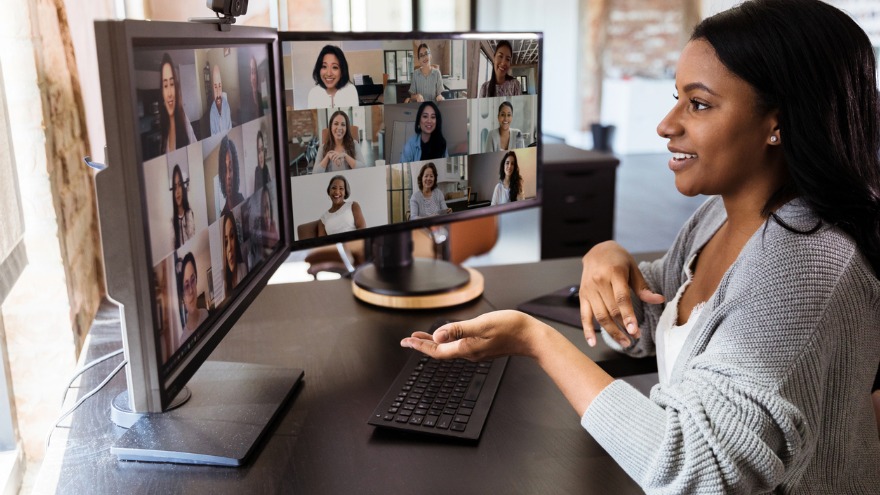As we move into pandemic recovery, virtual and hybrid events will remain top of mind for many marketing teams, with 92 percent of companies planning to host a digital event, conference or meet-up at some point in the year. Yet, despite the high potential for virtual events due to cost savings and ease of access, there is a considerable challenge ahead for event organizers to deliver a truly valuable experience by replicating the networking opportunities for attendees that exist during live events.
A few possibilities for virtual event planners to provide networking opportunities for attendees include:
- Live chat tools alongside a session (part of the platform), where attendees can ask questions to the presenter and engage with each other
- Dedicated messaging channels on third-party sites/services (Slack, etc.), which can include channels for each conference track
- Open video conference rooms before or after the event for attendees to hang out
- Hashtags across social media platforms for cohesion and to aggregate conversations
How to Spread the Word
It doesn’t matter which networking options you choose to offer at your virtual event if your attendees don’t use them. It’s important to frequently communicate and promote these areas for engagement both in advance of and during the conference.
If you abide by the rule of 7, which asserts that a person has to see or hear a message seven times before it sticks, your team should promote networking opportunities whenever possible and through a number of channels to increase the likelihood of attendees finding them.
Seven key tactics event marketers can use to promote virtual networking opportunities include:
- Conference website: Even when prospective attendees are first exploring your conference agenda and speaker list, you want to make the networking opportunities clear on your event site. We recommend creating a dedicated page to explain how attendees can network, the associated channel(s) they can access and which hashtag(s) they should follow.
- Pre-event emails: Include a section in all of your pre-event communications that details how attendees can network with one another. Link to any relevant group pages or sites available to facilitate conversations, and also share which event hashtag attendees should use across platforms.
- Event sessions: At the end of your conference sessions, have the speakers explain how attendees can connect with them and promote any related conference networking opportunities. Provide this as a sample message template to all speakers.
- Event transitions: At the end of sessions and during breaks, display a transition slide that explains what session is next, where attendees need to go, what time, and how they can connect with their peers. This is just as valuable during a virtual event as it is during those held in-person as it helps attendees optimize their time.
- Event branding/visuals: Digital event platforms have several areas to customize to match your branding. If possible, include the event hashtag in a visible spot on your event platform, and promote any sites or pages that attendees should visit for more information.
- Social media: Promote the event across your social media channels, including reminders of which sessions are upcoming, where attendees can access critical resources, and highlights from the sessions. You should pre-schedule general promotion tweets and have one or two team members (depending on your event and team size) available during the conference to keep posting content and monitoring for questions. Additionally, provide conference speakers with a few pre-approved posts that they can easily share to promote the event’s various networking opportunities.
- Press and media attendee lists: Certain types of industry events attract trade reporters as it provides them a good opportunity to cover announcements, news and meet with company executives and other attendees. By providing a press attendee list to registered attendees, you enable better networking and meet-and-greet opportunities both during the virtual event or for follow ups afterwards.
With the right communication strategies, event planners and marketers can bridge the gap between physical and virtual events to provide meaningful networking opportunities for event attendees. Providing and promoting viable ways for attendees to engage with one another will delight your attendees, drive new business leads for your team, build your online communities and position your brand as a leader in digital event experiences for years to come.
Adam Riggs is CEO of Frameable and Social Hour. He was the first president and CFO of Shutterstock from 2005 to 2010. Prior to Frameable, Adam was a Presidential Innovation Fellow at the Treasury Dept. and a subject matter expert at the State Dept. on a variety of open data and knowledge management challenges.




